#charcoal and gouache on canvas
Explore tagged Tumblr posts
Text
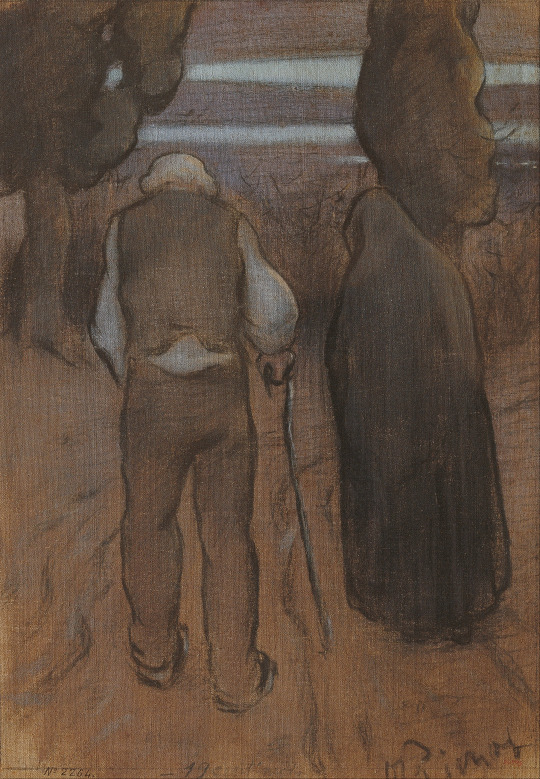
Twilight, Ramon Pichot Gironés, ca. 1894-1900
#art#art history#Ramon Pichot Girones#drawing#portrait#Spanish art#Catalan art#19th century art#charcoal and gouache on canvas#Museu Nacional d'Art de Catalunya
209 notes
·
View notes
Text
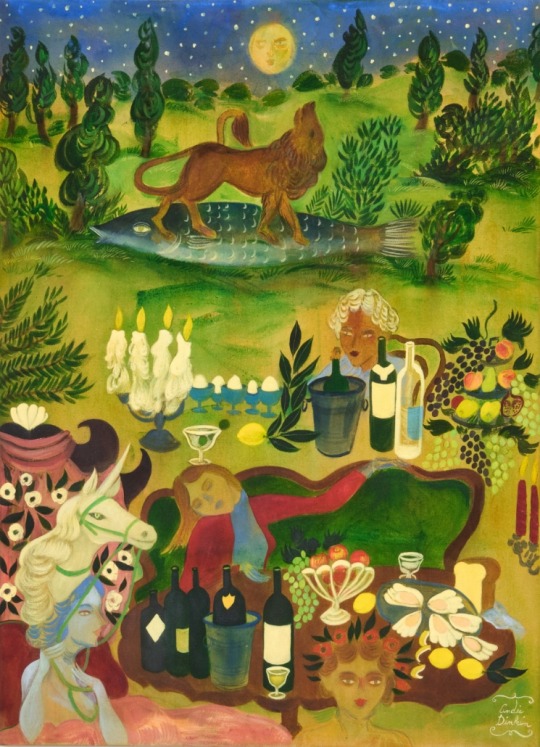
Andie Dinkin (American, b. 1991)
The Lion, The Fish and the Wardrobe, 2023
Acrylic, ink, gouache, charcoal on canvas
219 notes
·
View notes
Text
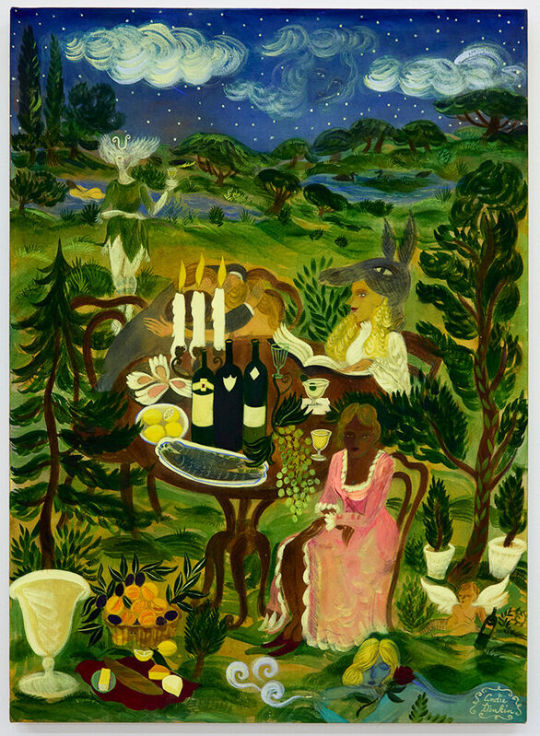
Andie Dinkin - Midsummer Night's Dream, 2024 - Acrylic, gouache, ink and charcoal on canvas
59 notes
·
View notes
Text
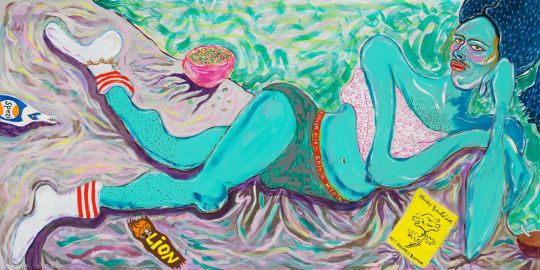
Constance Tenvik (Norwegian, 1990), I have more memories than if I’d lived a thousand years (Edoardo spacing out), 2020. Gouache, charcoal and saffron on canvas, 100 x 200 cm.
58 notes
·
View notes
Text
Love at First Paint: A Beginner's Guide to Painting
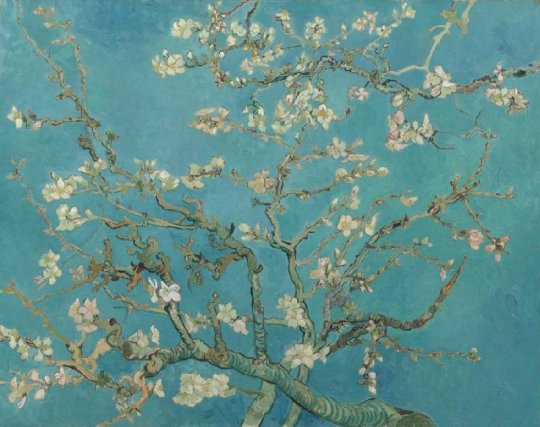
"Almond Blossom" by Vincent van Gogh (1853 - 1890), Saint-Rémy-de-Provence, February 1890
Have you ever dreamed of being like Picasso or Vincent Van Gogh? If you do, you are looking at the wrong blog because I am far from them. But hey there! I'm Eden Amor, a freshman student and a self-taught artist who just loves to paint.
Art has been my passion since I was a kid, and as I grew older, I fell even more in love with it and started trying out different mediums and styles. But there's just something about painting that really excites me! I started with graphite, then moved on to colored pencils, and even dabbled in charcoal (although I never got around to using those charcoal pencils I ordered online). Finally, I found my true love in watercolors, and I've been obsessed with working with wet mediums ever since!
If you are a beginner in painting (like me, have been a skill of a beginner for years), you can enjoy my blog and get some tips that I learned from my starting journey. But if you are just interested in painting or in art generally, you can still read this blog.
Just a disclaimer: I am no expert and just a self-taught artist. Some things might work for me and not for you, and vice versa, so take this blog with a grain of salt.
LEARN ABOUT PAINTING
Since I am a self-taught artist myself, I never applied for workshops in drawing or painting. But most of my art knowledge is from YouTube tutorials, shorts, and IG reels (I have no TikTok, I don’t know why). I suggest learning about the basics before painting whatever you want because you’ll get disappointed after the result or wondering why everything is not working the way you wanted.
But before anything else, find the medium that you want. Mediums like acrylic, oil, gouache, and watercolor. There might be more but these four are some of the common wet mediums. One thing to address about these mediums is that they all have different properties and the techniques you’ll approach, the materials you’ll use, and the finish or outcome of the painting will depend on the medium.
MEDIUMS
Watercolor
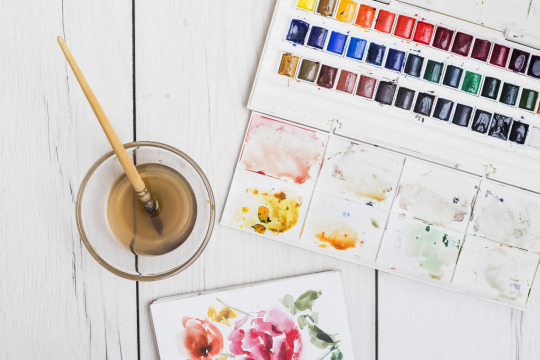
My recommendation for anyone wanting to start painting with no experience is to use watercolors. The only things you need are watercolor paint and water. Unlike acrylic paint, which, although water-based, can get pretty messy and dries quickly, giving you little time to blend and touch up unless you use an acrylic medium called Retarder, which is a medium that you mix with the paint to slow its drying time, but will cost you more. So, as simple as watercolor can be, it's a great starting point for a beginner in painting.
However, watercolor painting can be tricky when it comes to water manipulation. The amount of water your brush holds affects in creating an even layer of paint. The drying time takes hours, especially if you are working in layers, if you paint the still-damp surface too early, you will ruin everything and you cannot cover it up since watercolor is transparent. That is why watercolor painting is done light-to-dark because dark colors cannot be covered by light colors. So planning ahead of time is suggested and should not paint with watercolor impulsively.
Acrylic
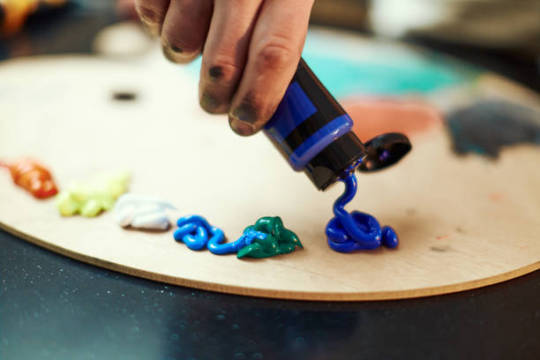
If you want to take the next level or just explore other mediums, acrylic painting is great for high coverage and textures. What watercolor doesn’t have but acrylic has is the ability to cover mistakes. In acrylic painting, you can paint on top of a painting, which is great especially if you change your mind or decide to start all over again, as long you coat more than one layer of white paint then you have a blank canvas again.
However acrylic paint, as said earlier, dries quickly which can be a disadvantage if you are a slow painter (like me) and especially if you are making a seamless gradient, which is very difficult to achieve and not as easy as you think. Since acrylic is water-based, cleaning is very easy with just water as long as the paint is still wet. Hardened paints can be peeled off easily but only on smooth surfaces, but if you got it on something like fabric, it will be forever on it.
Gouache

I describe gouache (pronounced as ‘goo-aash’) as a combination of watercolor and acrylic. Because like watercolor, gouache is water-activated paint, which means that dried paints can be revived and used the paint again when wet. And just like acrylic, gouache has high coverage and a thick consistency which is great for texture. But unlike acrylic, which has a glossy finish, the gouache creates a matte finish once the paint is dry and it also dries fast giving you no more time for creating flawless gradients.
I use gouache for mini projects, or creating art trends I saw online, but I don’t recommend it for painting a big major project since it can be smudge once wet, and as of now, I don’t know if there’s an appropriate varnish for gouache so if you have any idea please let me know in the comment section.
Oil
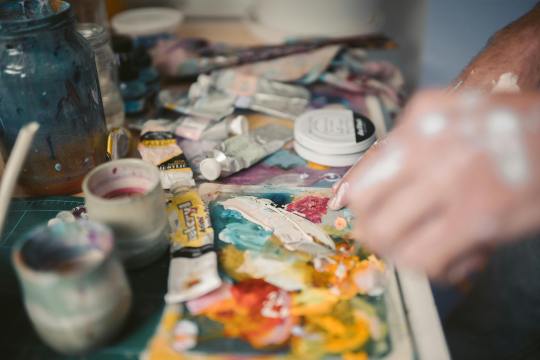
The most expensive of the four mentioned paint mediums is oil paint. However, oil paint creates the most realistic paintings. Despite its high cost, what makes me love oil paint is how smoothly the paintbrush glides, like butter. Blending oil paint is very easy, and you can create flawless gradients between colors. Oil paint has a very slow drying time. For small projects, such as those the size of half a sheet of bond paper, it can take days to weeks to fully dry and be ready for varnish. This slow drying time can be both an advantage and a disadvantage, depending on the complexity of your painting. It allows you to fix mistakes or make adjustments even the next day. Additionally, a small amount of oil paint goes a long way.
Oil painting can be hazardous because it involves flammable oil-based paints, as well as mediums like thinner and linseed oil. While water is used to dilute watercolor, gouache, and acrylic paints, oil paint requires the use of thinner. It's important to avoid washing oil paintbrushes with water, as it can damage the brushes and won't effectively remove the paint. Additionally, it's crucial to store oil paints, thinner, and linseed oil away from sources of heat and fire.
Since I am only new to oil painting, I cannot give much in-depth information about it and if you do please I beg for some advice and tips in oil painting.
Materials in Painting
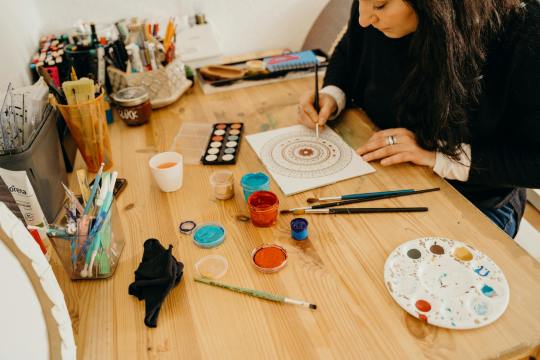
Painting can be an expensive hobby given that the materials used (especially the branded ones) are not really as cheap as a pencil and a piece of paper. But aside from being a painter, I am also a cheapskate.
I will never buy an art supply that is as expensive as my kidney, UNLESS if it is worth it or I can make money out of it. I don’t really have all the money to buy all the art supplies I want, I am still dependent on my parents and have no job yet (currently at college, 18, and an irresponsible young adult).
That is why I chose to buy art supplies online instead from the art stores near my place. And I think as a beginner, expensive materials are unnecessary because for me an artist should be able to make a masterpiece with his/her skill and not the tools. But that doesn’t mean the quality of materials will not make a difference. So if you are the same as me, you can use my tips.
Paint
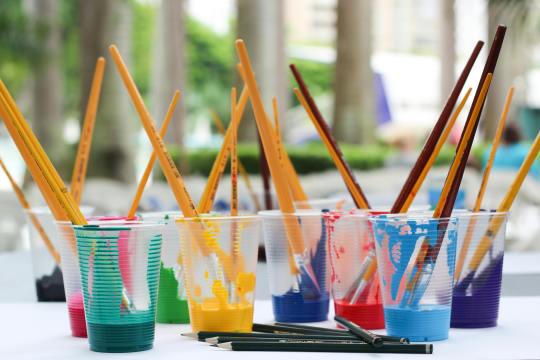
The paints I use are not of great quality, but they are good enough. I honestly thought that some of the paints I bought were much better than the pricier ones.
In watercolor, there are two common types: in the tubes and in the pans. The tubed paints have a consistency of acrylic, unlike the ones in the pans, which are hardened. What I have is the Superior Watercolor in pans set. I bought them online for less than $10, and it is a set of 18 colors with a brush pen and sponge included. The quality is great, it is not chalky, and it doesn’t smudge once dried. I spent my money wisely, and I do not regret buying it even though $10 is already a lot to me.
When it comes to acrylic and oil paint, I suggest buying the primary colors (ultramarine blue, crimson red, cadmium yellow), titanium white, black, and magenta only. I highly suggest buying a large amount of white because you’ll need it most of the time. Buying a set is very costly, but with these 6 colors, you can create any color, save money, and at the same time improve color-matching skills, which is an essential skill as a painter. If you wonder why I added magenta, it is because the combination of red and white is not bright enough to be pink or it is just different from the color magenta, and I think having magenta in the collection is a good addition. I used the Mont Marte brand in acrylic and Marie’s for oil paint.
Paintbrush
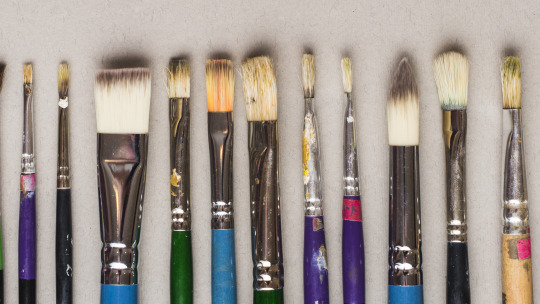
There are different shapes of brushes: flat, round, filbert, and detail are the commonly used shapes, and it depends on the medium you are using. For watercolor, a round brush is recommended, and a flat brush is recommended for thick paints like acrylic and oil paint. A filbert brush is also a flat brush, but the trim is round, and it is good for painting clouds. A detailed brush is used for small details like painting dots and thin lines or for small paintings. There are more shapes of brushes out there, but having a variety of brushes can be overwhelming. Get only the brushes you need and have them in sizes small, medium, and large. The size of the brush will depend on how small or big your painting is. Using the appropriate shape and size of the brush will lessen your expenses and you’ll learn to depend more on your skills than the tools.
There are cheap but not too cheap brushes available online. They are not branded, but the quality is good enough (like the ones I use), and the bristles don’t come off easily.
Paper
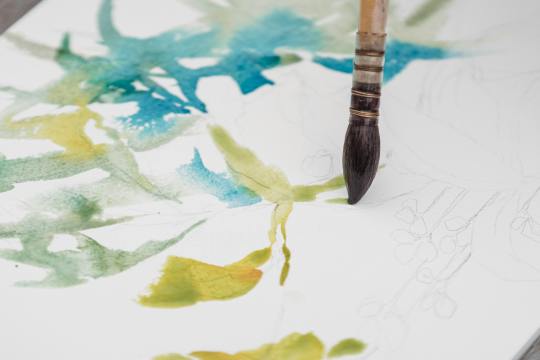
We can paint on anything, but nothing beats paper. However, the paper used in painting is not just an ordinary paper. The thickness of the paper used in painting, particularly watercolor paper, is important so that the paint would not easily destroy it.
Watercolor paper is usually combined with cotton, making it more durable than regular paper or cardstock. The percentage of cotton in the paper varies as the price varies. It is recommended to use 200 gsm paper, which is what I have because it is affordable and good enough to hold a few layers of paint.
However, I highly recommend using 300 gsm paper because the 200 gsm papers I use still curl up or bend and get wavy, which is a hassle when painting. The higher quality, 300gsm paper or paper containing 100% cotton is easier to work with, as I have observed online, even without taping the paper down, it doesn’t curl up. But of course, high-quality paper costs more, so 200 gsm paper is good enough.
If you are wondering why I called the paper used in painting "watercolor paper," it's because you can also use watercolor paper for acrylic, gouache, and oil painting.
There are two types of watercolor paper:
Cold Press - Cold-pressed watercolor paper has a rough texture, which is great for watercolor painting because it gives more depth to the flat painting (water is water, they can't have shapes and textures like acrylic).
Hot Press - The hot-pressed one is recommended for thick paints because it has a fine, smooth surface, which is great for blending smoothly.
Aside from paper, you can also use canvas paper, stretched canvas, or a canvas panel for thick paints. However, since you are only starting in painting, paper is recommended for practice and is much cheaper than the canvas mentioned above.
OTHERS
Masking Tape
Why masking tape? It is used for tapping down the edges of the watercolor paper so it stays put and flat on the surface which makes painting much easier, and also it creates a clean border. You may see other artists use washi tape because they are less sticky and won't damage the paper once it is peeled off, but I think using washi tape costs more, instead, stick first the ordinary masking tape onto your clothes until it becomes less sticky, and then you are good to go.
Mixing Palette
Usually in watercolor paint sets, the lid of the container serves as the palette. However, when using thick paints like acrylic or oil, a better alternative to a traditional paint palette is a picture frame. Mixing paint on a glass surface is convenient for two reasons: (a) it is smooth and does not absorb the paint, and (b) it is easy to clean. Dried acrylic or oil paint can be easily peeled off the glass or scraped with a blade or glass scraper, leaving a fresh and clean surface for mixing. Additionally, the wood or plastic frame around the glass provides protection against breakage and sharp edges.
Towel/Tissue
A used towel or tissue is not only used for cleaning; it is also mainly used for soaking up the excess water on a brush or for wiping off the excess paint. It is very handy, so you should always have it by your side while painting.
Jar
A brush washer is a must-have for painting. This is where you wash off the paint with water from the brush. You can use an old cup or jar as a brush washer instead of buying the fancy ones which is unnecessary. I prefer using a jar because it is heavier than a regular plastic cup, which prevents it from tumbling or spilling.
Here's a tip I learned from YouTube: use two brush washers. When you wash your brush once in a single container, the water gets muddy. This can make your fresh paint muddy when you switch colors. To prevent this, wash your brush twice: once in the first container and then again in the second container. This ensures that the water picked up by your brush is clean and not muddy.
ART STYLE
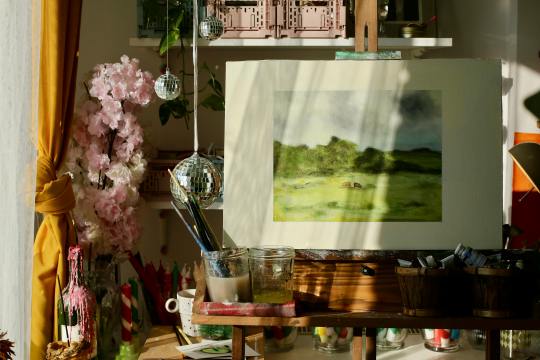
Early in my painting journey, I started practicing by painting scenic landscapes because they seemed easy to me. Of course, I overestimated myself. So I continued practicing more. Painting nature has grown on me, and I realized that my genre is landscape painting. The good thing about it is there is less structure unlike a portrait of a person, and shapes are organic so I will have no problem with imperfections.
However, I still don’t have the ability to create my own work. I still have to watch tutorials online to have a guide. Most of my artworks were tutored by the artists I follow. Once I start painting with just a reference from Pinterest, I tend to get lost and suddenly don’t know what to do. I end up not continuing the work, which is a waste of time, energy, and material.
Lately, I returned to working with watercolor, but instead of nature, I used a reference photo of a person as a subject. Sketching the face first is my least favorite part, because if I mess up sketching the face, the whole painting is also a mess. Most of my subjects are K-pop idols, especially BTS, because I am also an ARMY! Working with faces is difficult but once you succeed, it is all worth it.
Social media has highly influenced my art style. The fact that I get envious whenever I see new art trends gives me a push and inspires me to continue doing my art and explore more.
Check Out These Artists I Follow
Correa Art
Youtube: https://www.youtube.com/@CorreaArt
Instagram: instagram.com/correaart_
Jess Chung
Youtube: https://www.youtube.com/@JessChungArt
Instagram: instagram.com/jesschungart
Emily Mackey Art
Youtube: https://www.youtube.com/@EmilyMackeyArt
Instagram: instagram.com/emilymackeyar
Genelyn Sandaga
Youtube: https://www.youtube.com/@GenelynSandaga
Instagram: instagram.com/genelyn_sandaga
Socials
If you want to know more about my art, you can visit and support my two Instagram accounts:
@ChiliCheeseLover
@paintwith_amore
💜💜💜
If you have feedback to share, please do! I am eager to hear your thoughts. If not, kindly give this blog a heart; it is greatly appreciated!
💜💜💜
49 notes
·
View notes
Text
man … making haruo an artist of any capacity — esp a teacher/professor is cracking open the sheer unhinged experiences i had in college when getting my bfa. talk about wackass stories

anyways, some art hcs about haruo 🤓🎨🖌️
haruos preferred medium is oil paints. gouache is a close second, watercolors next, acrylics last. likes to sketch with charcoal over graphite most of the time.
tried sculpting more than once and is disastrous with it.
does have a tendency to … paint in very unconventional ways — as in, will use anything but an easel to support his canvas/paper. the fridge… his lap…..
he’s fallen asleep on a few pieces for sure.
is fairly well known! he’s taken a big step back in creating his own work since his wife passed, though. decided to focus more on teaching instead. and, hey, his previous connections have certainly helped his students gain a footing in applying to shows, get spots in residencies, etc.
originally, he work focused on hyperrealism but lately it’s been transitioning into something more abstract.
usually ties his hair up whenever he’s painting. also has a bad habit of sticking brushes behind his ear or in his bun and forget about it.
#* & make way for rapid clown honking — ooc .#// also. traditional artists are built diff#// when i learned abt egg tempera oils i was like wdym they slapped pigment into egg yolks—
6 notes
·
View notes
Note
❝ close your eyes ! ❞ she had been a bit frantic about it; kept the box out of sight, despite his towering around, trying to get a peek. she knew she wanted to make something herself; she knew she didn't want to make the same thing. hobie had enough portraits and paintings hanging around.
❝ don't cheat— okay, keep them closed ... um, maybe— bend over a bit ... ❞
something presses against his lips, the gesture awkward and weird, causing felicity to stiffle a laugh. it's not a gesture that's unknown to hobie, but it lacks the expertise of someone used to that kind of stuff.
❝ at least it didn't smear. ❞ she keeps laughing once he opens his eyes, holding an opened tube of black lipstick, the box in her hand holding a few identical ones. no brand on the side.
❝ i figured you'd— you'd run out of those after a while, so, i wanted to learn how to make some. ❞ another laugh as she hands over the package. ❝ merry christmas, hobie. ❞
First thing's first, Hobie knows what he likes. He likes creativity. He likes when the maker isn't afraid to dig into places that most flinch away from. Too many artists get too comfortable. Too many artists dislike the idea of straying away from what's familiar. How many Henry Raeburns and George Stubbs does one world need? How many museums need to hold the pieces only meant for the aristocrats to look at while drinking wine more expensive than a block's worth of homes?
It's rubbish.
Hobie likes when Felicity gets her hands dirty, smeared with paint and oils and charcoals. She's in her prime when she doesn't resemble something human, hunched over her creations, seeing the world in colors that Hobie couldn't ever try to comprehend.
He's taken to being a muse, goes with the flow, let's her use him as a canvas. His lips knew the taste and texture of countless paints by now, gouache, acrylic, watercolor. Caked and layered with so many mediums, he might forget that he's a man, and think that he's a figure in her sketchbook.
She asks for him to close his eyes, Hobie obliges, smirking somewhat and tilting his head back.
" Gonna throw a mouse at me are ya? " He teases, knowing that she wouldn't do such a thing. He'd let her though. If she wanted to put shock on paper, he'd be the willing model.
Lips on lips. He knew this gesture well, liked it even more than the hairs of the paint brush that traced the curves of his mouth. Hobie cracks a grin, slouching forward the moment Felicity starts to laugh. A familiar feeling is left against his skin.
" You get me a bloody kiss for Christmas? " Hobie jokes, opening one eye and touching his bottom lip-- black makeup smudged on his fingertip.

" No kidding, you made this? " He sounds impressed, taking the lipstick tube. As he expected, it lacks any sign of packaging, no logos, no connections to corporate beauty. Clearly it was poured somewhere over a sink, carefully-- he can tell that at some point there was a shaking hand, a bubble in the liquid at the bottom of the stick.
Little imperfections made things feel human, and Hobie knew that big businesses wanted the human touch removed from their products.
This one's a winner. He takes the box, tucks it under his arm and hums thoughtfully.
" Gonna have to open all these, test 'em, you'll need to stand still real good so I can make sure they don't smudge when I use it. "
The assumption is easy to make. The only way to try out lipstick is to kiss. That's what it was for. Speaking with lips and translating thoughts without speaking; men like him with lips like his, speaking words of his own, weren't meant to sip wine from Marseille. Staining glasses bought with Sunday coupons and stored in simple cupboards suited him, leaving a part of himself on her whenever he felt the urge.
" Get you to make eyeshadow next time. "
2 notes
·
View notes
Text
“TRY HARDER”
art below the cut!!!
tw for blood and imagery of prayer!
please let me know if anyone would be interested in prints!! ill look into it if there is enough interest
⭐️
ID: charcoal drawings of a man in robes praying, with no head
another charcoal drawing of hands outstretch to meet where the head would be, a single star in its place
red paint stains each hand at the tips of their fingers
red acrylic paint is used to frame the piece, with four eyes filling the rest of the canvas
the eyes, painted with gouache and acrylic paint, show yellow and red reflections, with red coloration in the colored part of the eye, and whites, used to form a sort of ribcage in the whites of the eyes
red + black paint drips from and into some of the eyes
“TRY HARDER” is written at the top of the canvas
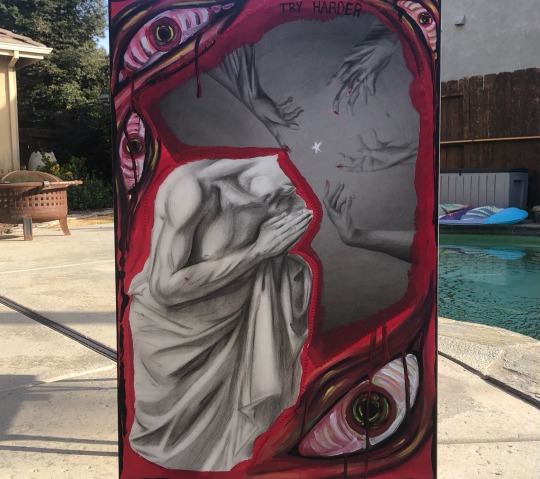
#artists on tumblr#traditional art#religious trauma#religious imagery#gouache#acrylic#charcoal#sewing
12 notes
·
View notes
Text

midnight blues by velia de iuliis, 2023, gouache, raw pigment, charcoal on canvas, 48 × 36 inches
9 notes
·
View notes
Text
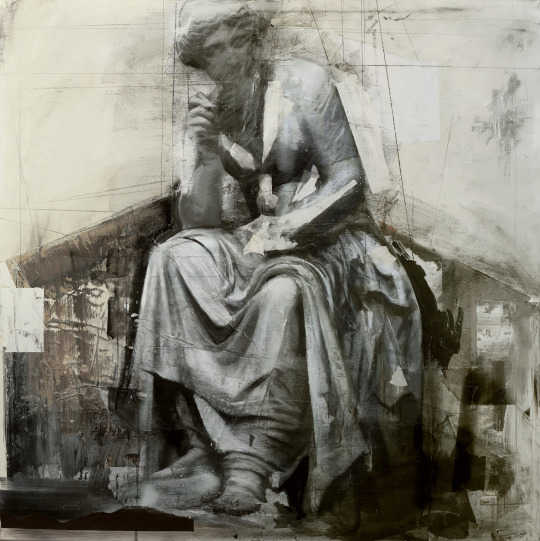
Calliope
90x90 cm
Charcoal, ink, gouache, graphite and acrylic on paper applied on canvas.
#art#arte#contemporary art#pittura#painting#pittura contemporanea#art gallery#charcoal#ink#acrylics#graphite
16 notes
·
View notes
Photo
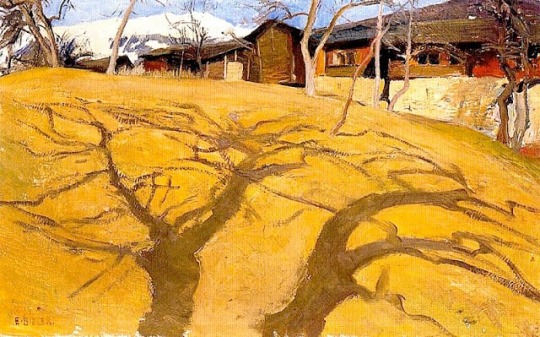
The happiest painting by Ernest Biéler, Mountain Landscape, 1896. Oil on Canvas.
Ernest Biéler (July 31, 1863 in Rolle, Switzerland- June 25, 1948 in Lausanne) was a multi-talented Swiss painter, draughtsman and printmaker. He worked in oil, tempera, watercolour, gouache, ink, charcoal, pastels, acrylic and pencil. He also created mosaics and stained glass windows.
17 notes
·
View notes
Text
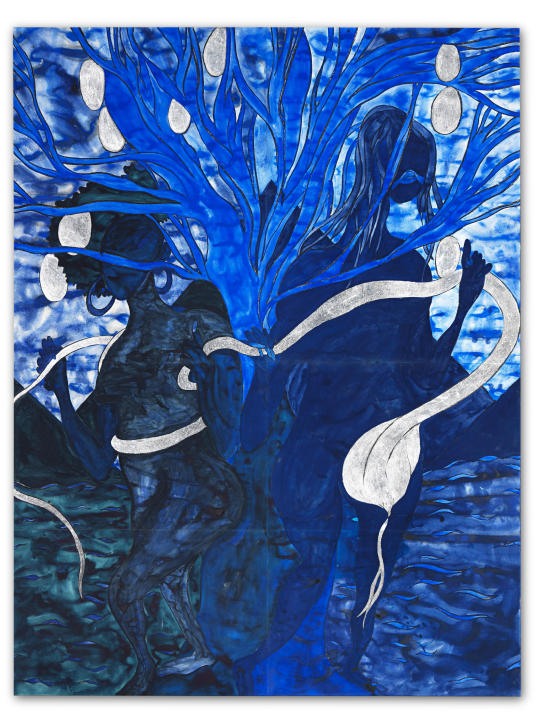
Chris Ofili (British, 1968), Blind Leading Blind, 2005. Gouache, ink, charcoal and aluminium leaf on paper laid on canvas, 261.3 x 199.5 cm.
52 notes
·
View notes
Text
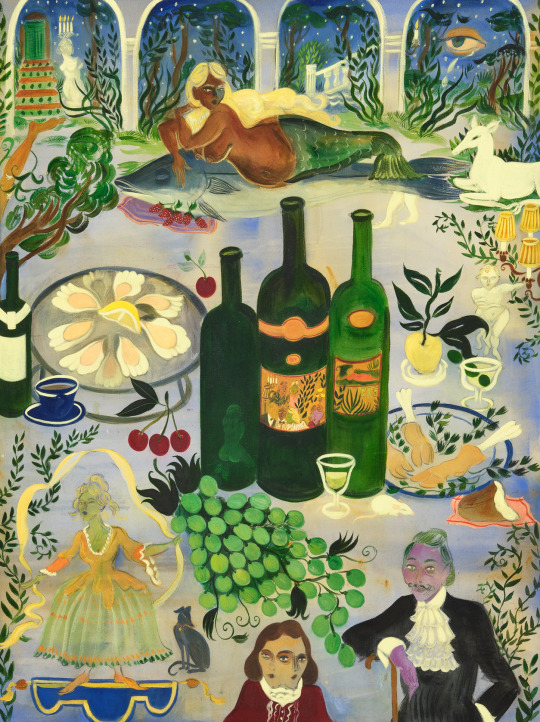
Andie Dinkin Mermaid Inn, 2023 Acrylic, gouache, ink, charcoal on canvas 48 × 36 in | 121.9 × 91.4 cm
6 notes
·
View notes
Text
Favorite Art Supplies
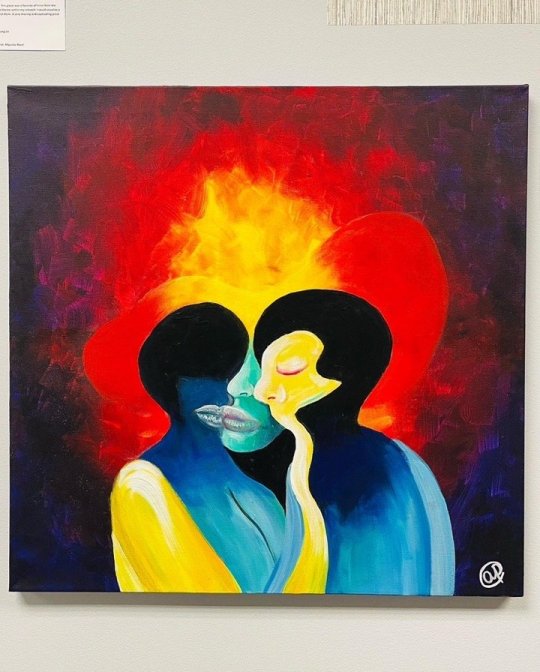
Artwork by Ashley Palmer (Me) 2023 24x24 - Acrylic on Canvas Watercolor Markers https://a.co/d/5nvob6x Watercolor Bullet Journal https://mymellowdays.com/en-us/collections/reverie-journals Gouache https://a.co/d/fMvpAjJ - Affordable Option Holbein Acrylic Gouache - Professional/Expensive Option Acrylic Paint https://a.co/d/ivFAwce - Acrylic Paint https://a.co/d/4qRtjwo - Posca Markers Pens https://a.co/d/cMnrzRm - Micron https://a.co/d/eDiHAh1 - Stabilio Fineliner (love but they smear) I was trying to think of other pens that I use, but I honestly just use Microns the most.
Pencils https://a.co/d/hl9kRuO - Mechanical Papermate ClearPoint Pencils (You can grab the graphite size you prefer, of course.) https://a.co/d/25p69yo - Graphite Pencils https://a.co/d/510uIo6 - Prismacolor Pencils
Markers https://a.co/d/emhA4fB - TomBow Double-Ended Brush Markers https://a.co/d/at2dKGh - Crayola SuperTips
Varnish/Sealants https://a.co/d/dbVIaT1 - Pastels, Graphite, Charcoal, or Colored Pencils https://a.co/d/fhLw9QX - Watercolor or Gouache https://a.co/d/e6tQEPZ - Acrylic (Some museums actually recommend NOT using varnish. Use at your discretion.)
#art#faq#wiki#my art#aesthetic#black artist#favorite art supplies#my favorite art supplies#bujo#bullet journal#hobonichi weeks#watercolor#acrylic#prismacolor pencil#posca markers#varnish#pencils#pens#stationary
3 notes
·
View notes
Text
"Ocho.012". 38x46cm. Gouache, marble dust, charcoal & sand on canvas. 2023
Buy my art in www.artevistas.eu
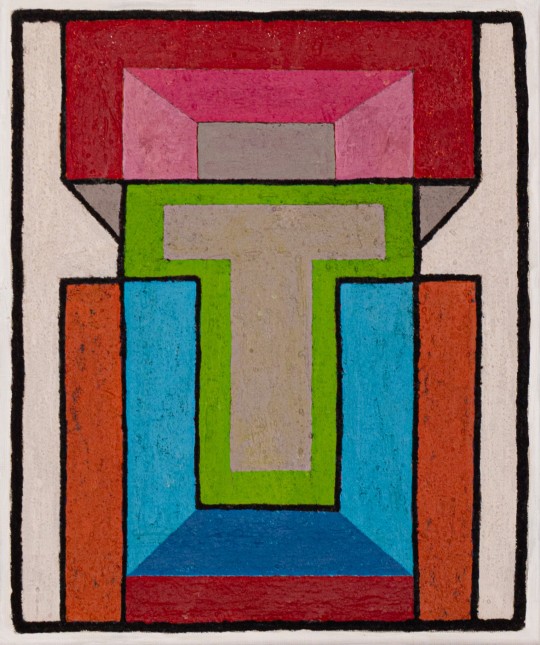
2 notes
·
View notes
Text
Nathaniel Mary Quinn
Nathaniel is an artist who is known for his college-like composite portraits, derived from the sources that are both personal and also found. His passion started at a young age, while he was growing up in the south side of Chicago. In ninth grade, he received a scholarship to attend Culver Academies boarding school in Indiana—but a month after arriving at the school, Quinn received news from his father that his mother had suddenly passed away. He returned to Chicago for Thanksgiving the following month, only to find that the rest of his family—his father and brothers—had abandoned his childhood home without a trace.
This traumatising experience further making him more passionate about his art and his school work, also adding his mother name, 'Mary', to his own name.
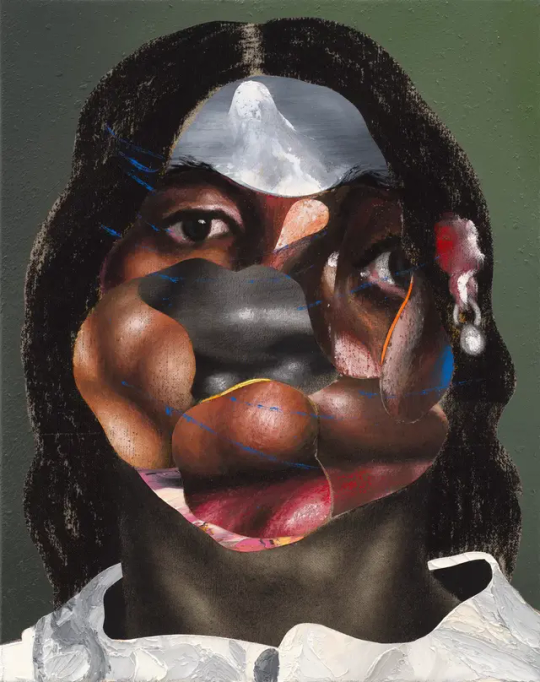
Midnight train- 2021;black charcoal,gouache,soft pastel,oil pastel,paint stick
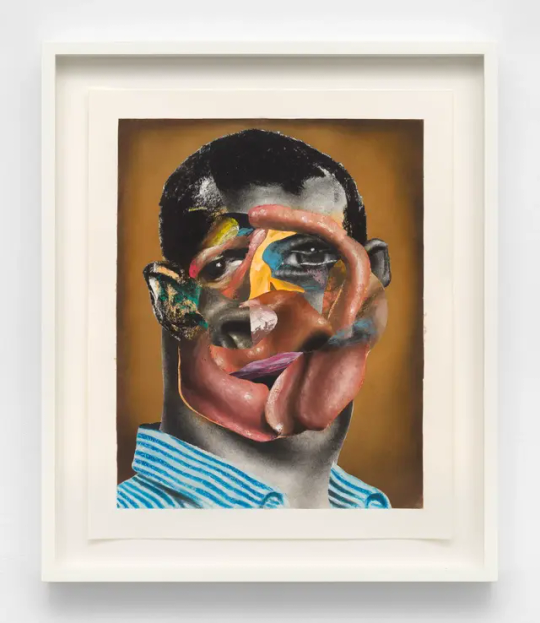
Look over your shoulder-2021;black charcoal,gouache,soft pastel on Coventry vellum paper
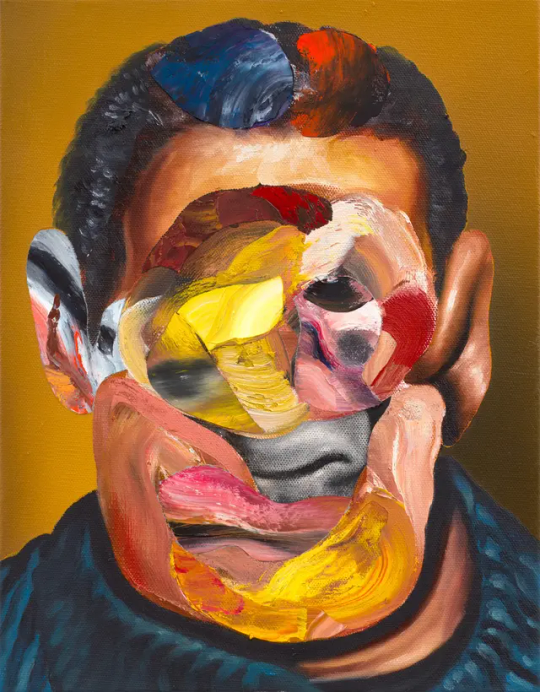
Norman-2022;oil paint,black charcoal,gouache on canvas
All of Nathaniel's pieces all contain a bit of something from his real personal life and cut outs from random magazines and such online, morphing them together. In his look over your shoulder painting, it was pieces of his brother that he hadn't seen in years drawn into it, which was shocking to the artist himself.
I find his work to be very inspiring on the path I am taking with my art, wanting to make my pieces to be morphed but with objects more so than with other facial features. He was very interesting to research and learn more about though.
1 note
·
View note